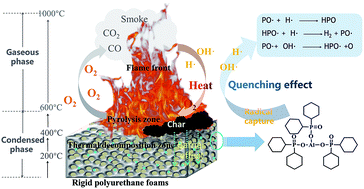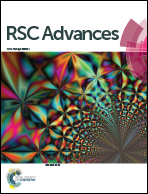Anti-flammability, mechanical and thermal properties of bio-based rigid polyurethane foams with the addition of flame retardants
Abstract
Adding efficient and environmentally friendly flame retardants to polyurethane foams is the preferable way to improve their flame resistance ability. In this work, bio-based rigid polyurethane foams (RPUFs) were prepared with the addition of dicyclohexyl aluminium hypophosphate (DAH) or aluminium diethyl phosphinate (ADP) as the flame retardant. The mechanical properties, thermal degradation and flammability behavior of the obtained RPUFs were evaluated by means of compressive strength tests, thermogravimetry analysis, vertical burning test and scanning electron microscopes. The characterization results indicate that, with the same content of flame retardant, the compressive strength at the deformation of 10% for each RPUF prepared with the addition of DAH is higher than that of the foams with ADP addition, which fully meets the specifications for building insulation materials. Moreover, the average flame height of each RPUF with the addition of flame retardants is less than 250 mm, whereas the average burning time of RPUF with 15 wt% addition of DAH is only 4.4 s, far less than that (12.5 s) of the foam with the same addition amount of ADP. The RPUFs with DAH addition have the potential advantages for thermal insulation applications in various fields.



 Please wait while we load your content...
Please wait while we load your content...